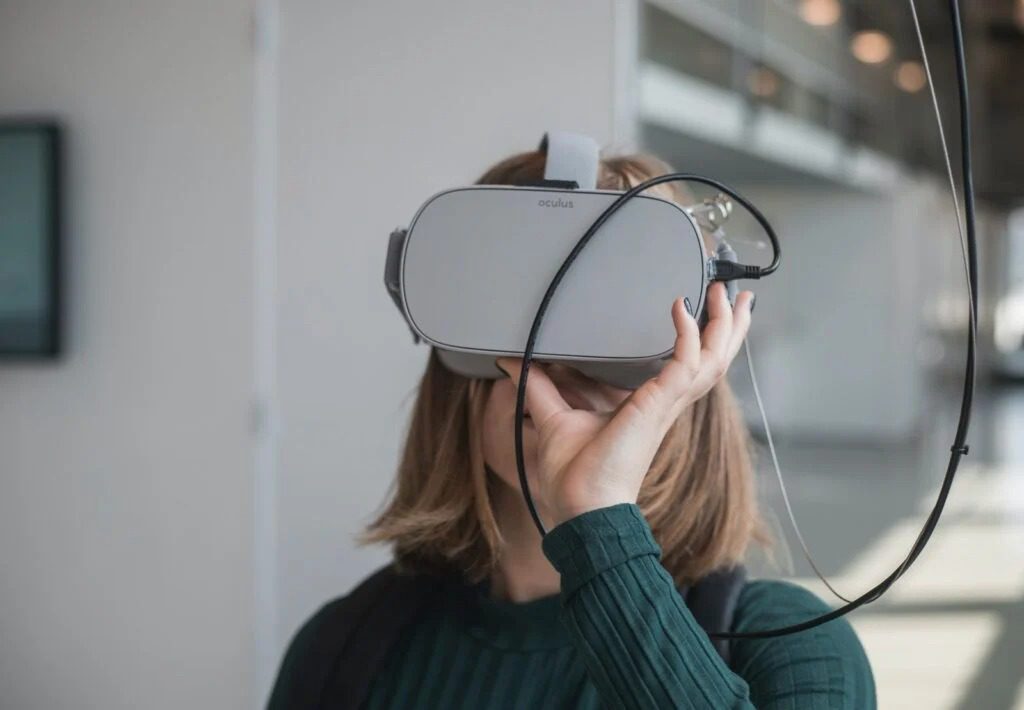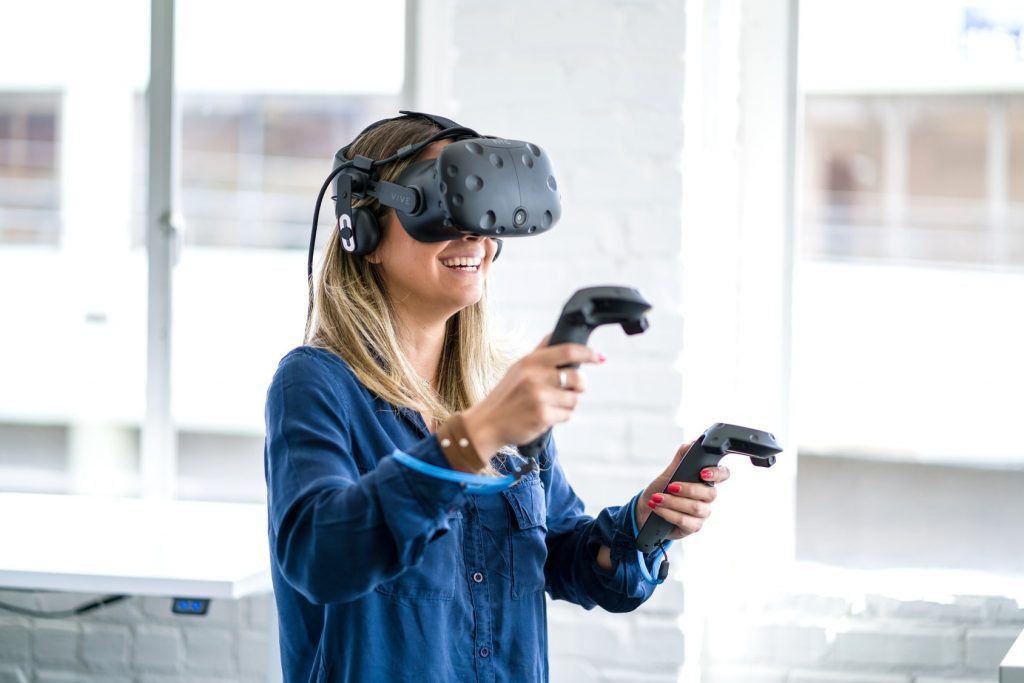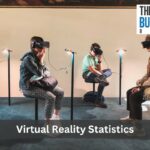Lockdowns and mobility restrictions are mostly over, but these have greatly influenced how many people use VR in 2024.
Imagine strutting the streets of Tokyo and sitting to see the stiff cliffs of the Amalfi Coast in Italy–all in one day!
In plain sight, making this happen will be close to impossible, but Virtual Reality says otherwise.
The technology allows previously unimaginable scenarios possible–although requiring the use of hi-tech equipment and intervention to create a limitless world.
From teleportation from one place and another to an interactive gaming experience that makes the user feel like a real character of a video game, everything is powered by VR.
Post Contents
- 1 How Many People Use VR in 2024?
- 2 Non-Headset VR Users in the United States
- 3 Headset VR Users in the United States
- 4 Knowing Everything About Virtual Reality
- 5 Virtual Reality vs Augmented Reality
- 6 Usage of Virtual Reality in Industries
- 7 Virtual Reality’s Market Value
- 8 Countries Leading the Virtual Reality Adoption
- 9 Conclusion
- 10 Sources
How Many People Use VR in 2024?
Exactly how many people use VR in 2024? It is estimated that 170 million people are now directly or indirectly using virtual reality.
In the United States alone, a country with huge exposure to this kind of technology, the number of VR users accelerated to more than 57 million users during the pandemic.
In 2021, 17.7% of the US population reported having VR exposure at least once.
Today, this industry has become a billion-dollar business, with a significant number of technology behemoths racing to get their respective share of the space.
Non-Headset VR Users in the United States
Even without using a gadget, commonly a headset users have to wear to access VR platforms, their virtual reality experience could still be personal, interactive, and stimulating.
In fact, this is the most common type of VR available to users today.
Below is a piece of information about the number of VR users in the United States from 2017 to the present. There will also be an inclusion of the projection for 2023.
- 2017 – 11.5 million non-headset VR users
- 2018 – 19.5 million non-headset VR users
- 2019 – 22.3 million non-headset VR users
- 2020 – 28.0 million non-headset VR users
- 2021 – 30.6 million non-headset VR users
- 2022 – 32.7 million non-headset VR users
- 2023 – an estimated 33.2 million non-headset VR users
The number of non-headset VR users has accelerated the most between 2017 and 2018.
During such a period, the sector added 8 million new users over the stretch of a year alone.
Headset VR Users in the United States
Another category of virtual reality experience is through the use of a dedicated headset, specifically designed to help users be in the moment, in whatever virtual environment they are in.
Big companies like Sony and Oculus dominate the VR headset market which distorts a user’s natural environment in exchange for a new realm that looks and feels real.
Here is the list of the number of headset VR users in the United States over the years.
- 2017 – 11.0 million headset VR users
- 2018 – 15.6 million headset VR users
- 2019 – 20.8 million headset VR users
- 2020 – 22.2 million headset VR users
- 2021 – 28.3 million headset VR users
- 2022 – 31.3 million headset VR users
- 2023 – an estimated 32.7 million headset VR users
Knowing Everything About Virtual Reality
Virtual reality is the use of visual and sensory-stimulating technology to create a realistic experience where the user is highly involved in the process.
More often, users have to use a headset specifically designed to make them fully immersed in the virtual environment they are interacting with.
In simple terms, virtual reality allows people to think and feel like they are in a new world that is computer-generated and designed using digital 3D modeling.
This means VR creates an illusion that a user is moving, feeling, and breathing in an environment that does not exist in reality, but looks and feels exactly like a real one.
Virtual reality has changed the way people interact with technology, especially in the fields related to gaming, travel, and healthcare, among others.
Virtual Reality vs Augmented Reality

Credits: unsplash.com
Although both terms have been closely linked, and even used interchangeably with one another, there is a fine line that differentiates virtual reality from augmented reality.
Virtual reality is the full immersion of a user to an entirely different surrounding which distorts perception and senses.
On the other hand, augmented reality is a “subtler” version of this distortion, as it only adds digital elements to the real environment one is operating in, to enhance the overall user experience.
Some widely popular examples of augmented reality are the Pokemon Go app, the Disney Coloring Book, and thousands of make-up apps that allow users to try on cosmetic products on their faces digitally.
Usage of Virtual Reality in Industries
There is no denying that virtual reality can be a valuable asset in any industry. However, it makes more sense in sectors that require a highly-interactive setup.
Here are some of the industries that use VR the most, and their respective adoption rate.
- The gaming industry – 61%
- Healthcare industry – 41%
- Education industry – 41%
- Manufacturing industry (including automotive sector) – 23%
- The entertainment industry (movie and television) – 21%
- Workforce – 20%
- Marketing and advertising industry – 16%
Virtual Reality’s Market Value
Just a few years after companies realized their underlying potential, virtual reality’s market value already hit $6.1 billion in 2020.
Moreover, its Compounding Annual Growth Rate (CAGR) is estimated at 27.9% until 2025, when it is projected to reach a market value of $20.9 billion during the year.
Countries Leading the Virtual Reality Adoption
China remains in the front seat when it comes to the rate of virtual reality adoption.
Both the private and public sectors in the country are continuously investing a huge sum of cash in the sector.
This comes as China is the world’s leading mobile internet user, and the current trend trajectory indicates that the majority of these users will have exposure to and turn to VR using their gadgets at one point in the future.
- China – $5.8 billion worth of VR spending
- United States – $5.1 billion worth of VR spending
- Western Europe – $3.3 billion worth of VR spending
- Japan – $1.8 billion worth of VR spending
- The rest of the world – $2.8 billion worth of VR spending
Conclusion
Virtual reality is changing the way people interact with technology.
Experts project that citizens will be more likely to use this novel way to go about their daily tasks in the coming years.
Today, the industry is already worth billions of dollars and growing.
With the world’s biggest companies backing its growth, there is no doubt about its massive adoption rate, leading to an entirely different experience of reality.
We hope you enjoyed reading this article about how many people use VR in 2024.






























